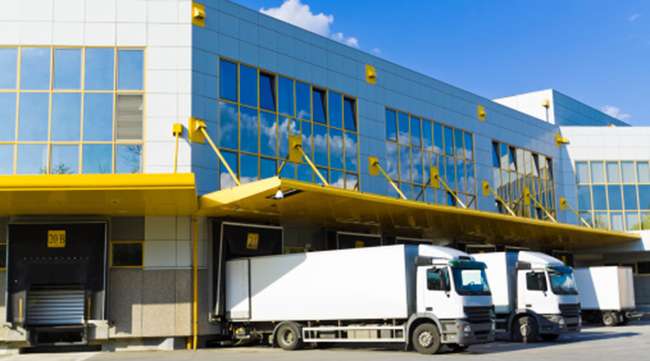Special to Transport Topics
Driver Detention Time Creeps Upward

[Stay on top of transportation news: Get TTNews in your inbox.]
Back in 2018, when freight hauling capacity became perhaps as tight as any time in history, trucking companies began to see more shippers stepping up to the plate, actively collaborating with carriers to drive up efficiency, drive down detention time — the bane of every truck driver — and, most importantly for the shipper, secure scarce capacity.
But that dynamic has shifted this year. Fleets invested heavily in new trucks and put them into service. Capacity has loosened significantly and competition for freight has intensified. And when it comes to driver detention time, it appears that many shippers have short memories, falling back into old habits that delay truckers excessively at their docks and push up dwell times.
CARTOON: 'Detention Time is the Worst!'
Earlier this year, the American Transportation Research Institute published a four-year study which collected input from some 1,900 drivers on detention frequency and length. In ATRI’s 2018 driver survey, more than 79% of respondents said that detention at a customer’s facility caused them to be late for or have to cancel their next appointment. Over the study’s period from 2014-2018, respondents saw delays of more than six hours increase by 27%.
“It’s getting a little bit worse,” said Jim Fields, chief operating officer at Pittsburgh-based less-than-truckload carrier Pitt Ohio.

Fields
“The soft freight market is one of the biggest factors,” he noted, adding that some customers, in an effort to rein in costs and improve their own productivity, “may not have as many people on the docks to do the loading and unloading as we would like for our drivers.”
Meanwhile, shippers who rely on third-party logistics providers may not be aware of delays occurring at their facilities, he added. “Simple communication with the shipper [about what’s happening at their facilities] can often help things improve.”
Last year saw many shippers make meaningful progress toward reducing detention times, recalled Greg Orr, president of Joplin, Mo.-based national truckload carrier CFI.
This year, “[detention time] has been a bit of a slip backwards ... not as big a priority as it probably would have been last year, but not as bad as prior years,” he observed.

CFI President Greg Orr said detention time is worse this year than last, but better than before 2018. (CFI)
It’s a hot topic, said T.J. Hunt, director of operations for Denver-based refrigerated carrier Navajo Express.
“Overall, detention time is getting worse, however, there are customers who have caught on [to the problem] and are getting better with it,” he said.
Hunt’s biggest point of contention: “The guy unloading [the truck] at the dock doesn’t care about the impact of his actions on the carrier. He’s getting paid by the hour, and he doesn’t have any skin in the game [to reduce delay and detention time].”
Hunt noted that any excessive time drivers spend waiting at the dock also represents time when that truck is not running — and not generating revenue. It’s a cost to the carrier, one that ultimately gets reflected in the rates and fees the shipper pays for the service.
Some of the more progressive fleets — and shippers — are working proactively to mitigate and reduce detention time, which robs the driver of productivity and earnings.
CFI’s Orr, like many other shipping and trucking executives, says proactive communication and frank, candid conversations are the key. He’s begun involving his drivers in quarterly customer reviews. They’ll look at the last 10 deliveries to a customer’s location and gather feedback — on delay, the driver’s experience, how they’re treated — information that Orr said CFI’s drivers are not shy about providing. That leads to a scorecard-type report that’s shared and discussed with the customer during the review.
“It was like the light turned on,” Orr said. “Hearing it from me or one of our sales managers is one thing, but hearing from the driver is much more impactful.”
John Janson is the director of global logistics for Issaquah, Wash.-based SanMar, the nation’s largest wholesale distributor of apparel. He noted that SanMar “took a real aggressive approach to detention.”
“We try to build the absolute minimum into our contracts,” he said, adding that “what’s within our control, we want to control. We want to identify ourselves as a shipper of choice.”
Janson and his team have “aggressively” gone away from “live load” operations and emphasize “drop and hook,” which, on average, enables a driver to get “in and out of the gate in 30 minutes,” he said. “We do all we can to make the driver experience very positive. We are driver-friendly, give drivers complete access to the facilities we have for them, a place to do their work, rest, get in and out quickly.”
A key element of SanMar’s strategy for reining in detention, Janson said, is consolidating volumes with a small group of committed, reliable carriers, working with them to refine and improve processes, and importantly, having an ample trailer pool assigned to the company. That gives Janson planning flexibility, helps increase drop-and-hook opportunities while diminishing live loads, and enables SanMar to have trailers loaded and ready to roll when the driver arrives.
He also cited the importance of education and alignment between the company’s distribution and logistics teams, which work together to improve driver turn time at the dock along with overall delivery performance. He said that reducing detention and dwell time has just as much economic benefit for his company’s operations as it does for his carriers.
“Drivers have a say in where they go,” Janson said. “We really work hard to educate all the stakeholders at SanMar about the realities of the [trucking] industry,” he said. “We want to help them understand, ‘Here is what these guys [and gals] are dealing with, how we can help them, and how our planning and actions impact the number of hours they can drive.’”
Detention cannot be a “flavor of the month” that gets attention only when the issue becomes intractable, or reaches a point of contention before shippers finally are moved to take action, said Tom Curee, vice president of strategic development for Kingsgate Logistics, a West Chester, Ohio-based provider of transportation management, freight brokerage and third-party logistics services.

Tom Curee, vice president of strategic development for Kingsgate Logistics, said detention time needs to stay in the forefront of the minds of shippers. (Kingsgate Logistics)
“It’s the old saying that the squeaky wheel gets the grease,” he said. In a business with so many pressing priorities, detention sometimes can get ignored, “especially when there is extra capacity and shippers are taking their time” getting trucks loaded and unloaded by under-staffed warehouses, knowing they can always get another truck.
It remains an issue that Curee discusses regularly with customers. In his view, the issue “needs constant focus not only to keep it in control but making sure it stays that way.”
“It’s all about visibility [and communication],” he added. “We need early notification that the truck is waiting [excessively]. If it’s not being loaded and unloaded within 60 minutes ... we can call the shipper and get the process expedited.”
Curee suggested that consistently and accurately measuring and charging for detention by the hour could help move the needle.
“That’s money in the bank for the driver,” he said. “If we can manage our resources better by the hour, everyone wins.”
He has a tip for shippers: “Don’t complain about what you allow. Detention is a very good example of this.”
With the expansion of truck telematics and federally mandated electronic logging devices, carriers also are getting more data faster, and more sophisticated tools to understand, predict and precisely analyze detention time and its impact on productivity and cost.
Pitt Ohio’s Fields noted that his company measures the exact time a driver is at a customer’s dock and historical trends, and flags when a customer is out of tolerance with their normal range of performance.
“We have a very good window into [shipper] performance, and we can communicate that to the customer,” he said. That leads to fruitful discussions about root causes and potential solutions, and what those can mean for how that shipper compensates the carrier.
Hub Group focuses on how the shipper uses the driver’s time, said John Vesco, executive vice president of the Oak Brook, Ill.-based intermodal and dedicated trucking services provider.

Vesco
His team measures transit time metrics, such as driver pickup at the rail head and delivery to the customer, dwell time at the dock, when a container or trailer is empty, time in and out of the facility, and how long Hub equipment is at a facility overall. He also measures Hub’s estimated arrival times and appointment accuracy. All of this information supports better planning and predictive analytics to refine operations and educate customers, which in turn can have a huge impact on driver satisfaction and earning power.
“A lot of our customers are asking for dwell time,” Vesco said. “They want to know how much time our drivers are spending at their docks, accurate information on time-in and time-out.”
He and his team are implementing a “rate my location” program, giving his drivers a process to rate shipper detention and other performance factors at individual locations.
“We ask them [things like] ‘How was the experience, how did they use your time, did you get accurate information?’" he said, noting that the goal is to make the reporting as objective as possible. The program is in the final stages of development, and Hub Group plans to launch it this quarter.
Vesco, like other executives, also stressed the importance of the shipper providing complete and accurate information — and communicating in a timely manner when things change.
He cited several factors within the shipper’s control that can influence driver productivity: clear and concise yet thorough directions for the driver about where on the lot to pick up the load, or which door to go to; efficient management of gate operations; staffing the warehouse with enough resources for timely and efficient loading and unloading; and effective planning and management of yard and dock flow.
“The more sophisticated, progressive customers are in tune with [these issues],” Vesco said. “They want the driver to have a better experience, and they want the information [from us] that will help them better manage their end. And they want to work with us to make us a better carrier.”
[Truck drivers] are professionals. Treat them with respect, and be respectful of their time when they are at your facility.
Gail Rutkowski, executive director of the National Shippers Strategic Transportation Council
Do shippers still desire to become “shippers of choice,” or is that now a secondary consideration in the current environment?
Most executives interviewed for this story felt that shippers still believe in the ideal and see it as the preferred relationship in any market. But they need to back up the narrative with consistent action.
“When there are bids or lanes that have been awarded, the shipper needs to commit to those volumes and make sure they are honored and executed upon,” CFI’s Orr said. “We all know things change and can be cyclical. But staying close to those commitments is key because we are planning [and committing assets in] our network around those decisions.”
Gail Rutkowski is executive director of the National Shippers Strategic Transportation Council, or NASSTRAC, the shippers’ association for transportation and logistics professionals. She cited a few best practices for shippers to consider in the fight to reduce excessive detention and improve the driver experience.
“First, become more driver-centric in your approach to transportation,” she said. “These are professionals. Treat them with respect, and be respectful of their time when they are at your facility.”
“Second, break down the silos,” Rutkowski said, encouraging shippers to drive better communication between the transportation team and the warehouse — and the entire company — about the value and critical role of transportation to the company’s success. Poor communication among shipper’s internal teams, carriers and drivers can cause waste of up to 10% in logistics spend, she said.
“Third, be engaged with your carriers,” she said. “Ask them what you can do to make them more efficient. Sometimes they give up because they feel [their concerns] are just falling on deaf ears.”
And lastly, Rutkowski had this counsel for shippers: “Honor your commitments, and realize that if you want to ride that cyclical [spot market] roller coaster, understand that [at some point] you are going to get slapped down like you did in 2018. It’s not going to be good for you or your company.”
Want more news? Listen to today's daily briefing:





